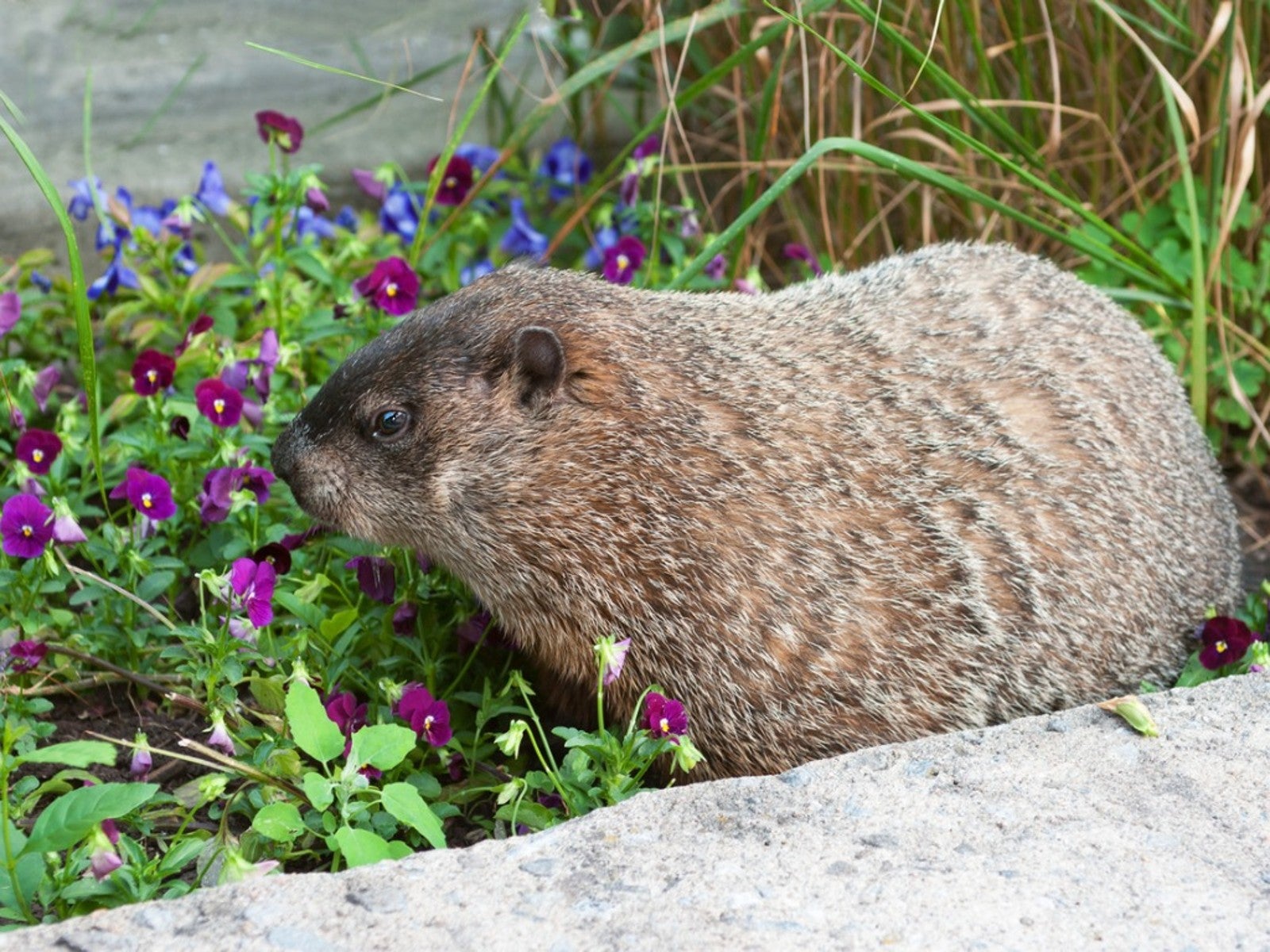What Do Groundhogs Like To Eat In The Garden?


Legend has it that groundhogs pop out of their tunnels on February 2nd to tell the world if winter is over. While these adorable critters may delight some people, groundhogs are not appreciated by many gardeners. This member of the squirrel family can do significant damage to crops and deterring them from the garden can be difficult. If you're wondering, “What does a groundhog eat?” the answer is pretty much anything.
The Groundhog Lifestyle
Although they are sometimes called woodchucks, groundhog is a more fitting name. These large rodents live in burrows underground and they can make pigs of themselves in a backyard garden. An adult groundhog weighs between 6 and 12 pounds (3-5 kg.) and can eat as much as 1.5 pounds (1 kg.) of vegetation per day.
Sometime between mid-September and early October, groundhogs enter their underground burrows to hibernate for the winter. During this period, they live off their fat reserves, and you guessed it, groundhogs will be building this layer of fat prior to hibernating. Which, coincidentally, is right about peak harvest time for many homegrown veggies.
What Plants Do Groundhogs Eat?
Although most of a groundhog's diet consists of plant material, they will occasionally eat insects and larvae. They love alfalfa, clover, dandelions, and grass but are also attracted to these lawn and garden plants:
- Apples
- Acorns
- Asters
- Beans
- Blackberries
- Blueberries
- Broccoli
- Cabbage
- Carrots
- Celery
- Cherries
- Coneflowers
- Corn
- Cucumbers
- Daisies
- Hackberries
- Hickory nuts
- Lettuce
- Maple leaves
- Marigolds
- Mulberries
- Pears
- Peas
- Raspberries
- Snapdragons
- Soybeans
- Squash
- Sunflowers
- Sweet peppers
- Tomatoes
In addition to these foods, the woodchuck diet can also include bark and roots.
How to Tell if a Groundhog has been in the Garden
While it's easy to spot fruit, vegetables, and plants that have been damaged by animals, it's not always easy to tell who the culprit was. One of the best ways to know if the garden has become groundhog food is to see woodchucks or find evidence of their dens near the garden.
Woodchucks depend upon dew and the moisture inside plants for their hydration needs. In the summer, they will most likely be seen foraging for food in the early morning when dew is heavy. Look for them mid-afternoon in the spring.
Sign up for the Gardening Know How newsletter today and receive a free copy of our e-book "How to Grow Delicious Tomatoes".
Even when the vegetable garden is thick with plant foliage, groundhogs won't hide. As you approach the garden, you will likely see them scurry out and head toward the safety of their underground burrows.
Groundhogs access their burrow by one or more entrance tunnels. The primary entrance will have a mound of dirt at the opening, but side entrances will only be a 4 to 6 inch (10-15 cm.) hole in the ground. Burrow tunnels can run 50 to 100 feet long (15-30 m.) and can descend 6 feet (2 m.) deep.
In soft soil you may also find groundhog tracks. These resemble tiny handprints. Although similar to raccoon prints, woodchuck tracks can be distinguished by the presence of claw marks at the end of each digit.
Protecting Garden Veggies from Woodchucks
Groundhogs are notoriously hard to eliminate from the garden. You can trap them by using one of the groundhog's favorite foods as bait. Try sunflower seeds, peanut butter, corn, or cantaloupe. Remember though, removing the current one often allows other groundhogs to move into the established burrow.
Fencing is effective in protecting garden vegetables from groundhogs. Woodchucks can climb and dig. Burying the bottom of the fence underground and bending the top outward are measures which can thwart groundhogs and keep veggies safe.

Laura Miller has been gardening all her life. Holding a degree in Biology, Nutrition, and Agriculture, Laura's area of expertise is vegetables, herbs, and all things edible. She lives in Ohio.